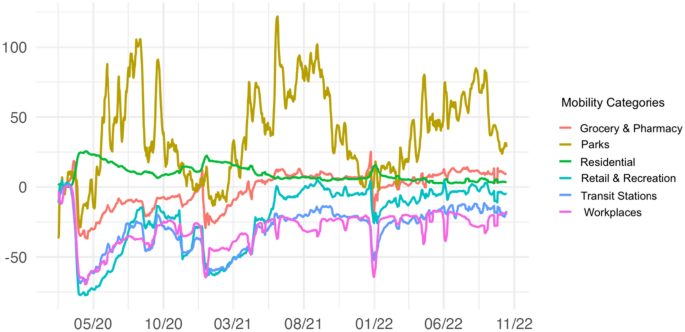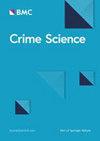Post-pandemic crime trends in England and Wales
IF 3.1
Q1 CRIMINOLOGY & PENOLOGY
引用次数: 0
Abstract
This study of recorded crime trends in England & Wales spans three and a half years, that is, two covid pandemic years from March 2020 and 18 ‘post-pandemic’ months following cessation of covid restrictions. Observed crime rates were compared to expected (based on 5-year ARIMA models) and the ambient population (using Community Mobility Reports). It finds that, In Year 1, observed rates diverged dramatically from expected, waxing and waning generally in line with the movement restrictions of three national lockdowns. In Year 2, movement restrictions loosened and observed crime rates moved towards but mostly remained far from expected. In post-pandemic Year 3, people’s movement increased and observed crime rates continued towards expected. By mid-Year 4 many rates remained below expected levels, their mean monthly differences including: theft from person (− 22%); burglary (− 20%); vehicle crime (− 29%); violence & sexual offences (− 27%); robbery (− 16%) and; public order offences (− 21%). An exceptional increase in shoplifting achieved 20% above expected rates by August 2023. Methodological limitations and further research on shoplifting and other issues are discussed. The main conclusion is that crime trends generally followed ambient population movement and that enduring lifestyle changes in the post-pandemic period, notably increased work-from-home, account for continuing below-expected rates of many crime types.

英格兰和威尔士大流行后的犯罪趋势
本研究对英格兰和威尔士记录在案的犯罪趋势进行了为期三年半的研究,即从 2020 年 3 月起的两个科维德大流行年和科维德限制停止后的 18 个 "大流行后 "月。观察到的犯罪率与预期犯罪率(基于 5 年 ARIMA 模型)和环境人口(使用社区流动报告)进行了比较。研究发现,在第一年,观察到的犯罪率与预期的犯罪率有很大差异,其起伏与三次全国性封锁的行动限制基本一致。在第二年,行动限制有所放松,观察到的犯罪率向预期方向发展,但大多数情况下仍与预期相去甚远。大流行后的第 3 年,人们的流动增加,观察到的犯罪率继续向预期方向发展。到了第四年年中,许多犯罪率仍低于预期水平,其月均差值包括:人身盗窃(-22%)、入室盗窃(-20%)、车辆犯罪(-29%)、暴力和性犯罪(-27%)、抢劫(-16%)和公共秩序犯罪(-21%)。到 2023 年 8 月,商店行窃的异常增长比预期高出 20%。报告讨论了方法上的局限性以及对商店行窃和其他问题的进一步研究。得出的主要结论是,犯罪趋势总体上是随着人口流动而变化的,大流行后时期生活方式的持续变化,尤其是外出工作的增加,是导致许多犯罪类型的发生率持续低于预期的原因。
本文章由计算机程序翻译,如有差异,请以英文原文为准。
求助全文
约1分钟内获得全文
求助全文
来源期刊

Crime Science
Social Sciences-Cultural Studies
CiteScore
11.90
自引率
8.20%
发文量
12
审稿时长
13 weeks
期刊介绍:
Crime Science is an international, interdisciplinary, peer-reviewed journal with an applied focus. The journal''s main focus is on research articles and systematic reviews that reflect the growing cooperation among a variety of fields, including environmental criminology, economics, engineering, geography, public health, psychology, statistics and urban planning, on improving the detection, prevention and understanding of crime and disorder. Crime Science will publish theoretical articles that are relevant to the field, for example, approaches that integrate theories from different disciplines. The goal of the journal is to broaden the scientific base for the understanding, analysis and control of crime and disorder. It is aimed at researchers, practitioners and policy-makers with an interest in crime reduction. It will also publish short contributions on timely topics including crime patterns, technological advances for detection and prevention, and analytical techniques, and on the crime reduction applications of research from a wide range of fields. Crime Science publishes research articles, systematic reviews, short contributions and theoretical articles. While Crime Science uses the APA reference style, the journal welcomes submissions using alternative reference styles on a case-by-case basis.
 求助内容:
求助内容: 应助结果提醒方式:
应助结果提醒方式:


